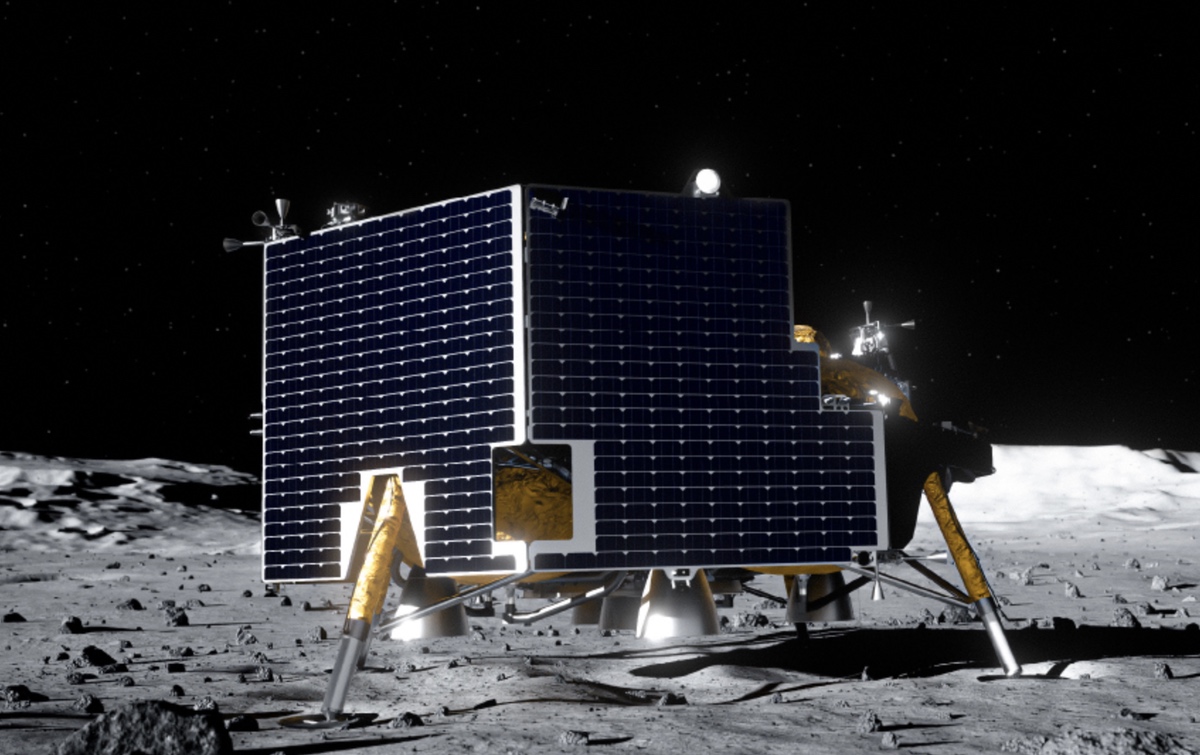LAS VEGAS — NASA plans to soon make its first robotic lunar lander awards in more than a year as the agency and the industry grapple with uncertainty in the overall program linked to the cancellation of a rover mission.
During a panel discussion at the AIAA ASCEND conference Aug. 1, Chris Culbert, manager of NASA’s Commercial Lunar Payload Services (CLPS) program, said the agency was “very close” to awarding a task order known as CP-22 for a lander to the south pole of the moon.
The award would be the first for a CLPS lander mission since the agency selected Firefly Aerospace in March 2023 for a landing on the far side of the moon. NASA had delayed the select of a provider for CP-22 and another mission, called CP-21, that would send a lander to a region of the moon called the Gruithuisen Domes.
“We’ve had a fairly significant delay since our last task order. Part of that is because we learned some lessons on these first two missions,” he said, a reference to Astrobotic’s Peregrine and Intuitive Machines’ IM-1 missions that launched earlier this year. “We wanted to take that into account and make some changes to the most current task order.”
“We are very close now to awarding the next task order, called CP-22,” he said. That will be followed by CP-21 “by the end of the year.”
NASA officials have previously discussed their intent to award two CLPS task orders a year to provide a regular cadence of missions to the moon. Culbert confirmed those plans, saying NASA will award two more task orders in 2025. “Over the next 16 to 18 months, we could award as many as four task orders,” he said. “We went a little slow last year, but we learned some important lessons.”
That is welcome news to the companies bidding on those missions. “Things have slowed down a little bit over the last year as we went into the first couple of missions,” said Trent Martin, senior vice president of space systems at Intuitive Machines, on the panel. “I feel like that cadence will pick back up again.”
However, he expressed a concern with how CLPS is structured. NASA selected 14 companies to be a part of CLPS, allowing them to bid on individual task orders. (One of those, Masten Space Systems, has since gone bankrupt.) He argued that pool of bidders is too large.
“There’s too many companies in the pool right now,” he said. “There are not enough missions to support 13 companies.”
He added he was pleased that NASA was now emphasizing past performance on CLPS task order proposals. That allows companies with “proven success,” he said, to win a “steady supply of missions that allow us to expand beyond CLPS and provide good quality products to CLPS.”
VIPER repercussions
The panel took place two weeks after NASA canceled the Volatiles Investigating Polar Exploration Rove (VIPER) mission, which was by far the largest and most expensive mission flying to the moon on CLPS. NASA is retaining the task order it awarded to Astrobotic for delivering VIPER on that company’s Griffin lander, with plans to fly other payloads or a mass simulator in place of VIPER.
Work on Griffin continues, said Dan Hendrickson, vice president of business development at Astrobotic, with the lander on track to launch in September 2025. “It’s a disappointing decision,” he said of VIPER’s cancellation, “but we’re moving forward.”
Griffin will still carry three commercial payloads, one of which is from the European Space Agency. “We are evaluating right now the possibility of other potential payloads joining this mission,” he said.
Culbert said NASA’s decision to cancel VIPER had nothing to do with the failure of Astrobotic’s Peregrine lander, which suffered a propellant leak hours after liftoff that kept it from attempting a landing. “We are satisfied that they both understand the problem and know how to solve it,” he said. “I don’t think we have any lack of confidence. I don’t think there’s any reason to believe that the Griffin mission would be challenged by that particular failure.”
He added that there have not been other changes to the CLPS program in the wake of the VIPER cancellation decision, but cautioned that efforts to revive VIPER by scientists and other advocates for the mission could have repercussions for the program. Agency officials said in the announcement of the VIPER cancellation that the costs required to complete and launch the rover could require the agency to cuts other CLPS missions.
NASA’s budget, he said, is a “zero-sum game,” with increases in one area requiring offsets in others. “If you stop something because you can’t afford it and then revive it, something else has to be stopped,” he said. “Could it be a CLPS mission? Yes, but I would hope it isn’t.”
Hendrickson said that, should Congress overrule NASA and direct the agency to fly VIPER, Astrobotic would still be able to fly the rover on the Griffin lander next September.
